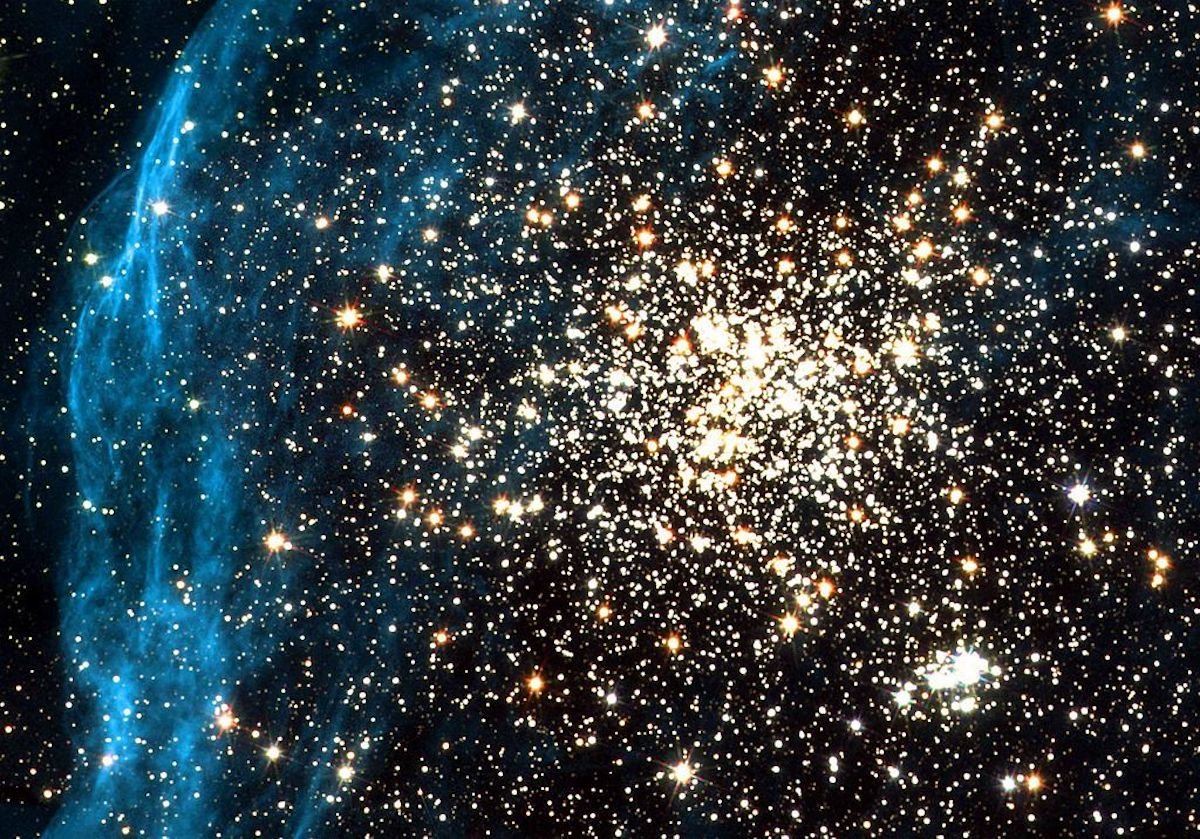Mysterious radio signals have been detected coming from a dead star nearly three billion light years from Earth.
They are being emitted by a "magnetar" - which have the most powerful known magnetic fields in the universe - or a giant sun gone supernova.
The strange object, described in the journal Nature, sends out a beam of radiation that crosses our line of sight.
Magnetars are a type of neutron star that form after a supernova and suffer violent eruptions that last just a fraction of a second.
They can contain up to half a million times the mass of Earth, in a diameter of just 12.4 miles.

Astronomers say it's only the second example of a highly active, repeating Fast Radio Burst (FRB), shedding fresh light on the nature of intergalactic space.
They used the National Science Foundation's Karl G. Jansky Very Large Array (VLA) and other telescopes to study the object, first discovered in 2019.
Observations in 2020 pinpointed the object's location, leading to its identification in the outskirts of a dwarf galaxy far, far, away.
The VLA data also found it constantly emits weaker radio waves between bursts.

Co-author Professor Casey Law, of the California Institute of Technology, said: "These characteristics make this one look a lot like the very first FRB whose position was determined - also by the VLA - back in 2016."
That development was a major breakthrough, providing the first information about the environment and distance of an FRB.
But its combination of repeating bursts and persistent radio emission between bursts, coming from a compact region, set the 2016 object, called FRB 121102, apart from all other known FRBs, until now.
Law said: "Now we have two like this, and that brings up some important questions."
The differences between FRB 190520 and FRB 121102 and all the others strengthen a possibility suggested earlier that there may be two different kinds of FRBs.
Co-author Kshitij Aggarwal, a graduate student at West Virginia University (WVU), said: "Are those that repeat different from those that don't? What about the persistent radio emission - is that common?"
The international team says there may be either two different mechanisms producing FRBs or that the objects producing them may act differently at different stages of their evolution.

Leading candidates for the sources are super-dense neutron stars left over after a supernova, or neutron stars with ultra-strong magnetic fields, called magnetars.
One characteristic of FRB 190520 calls into question the usefulness of FRBs as tools for studying the material between them and Earth.
Astronomers often analyze the effects of intervening material on the radio waves emitted by distant objects to learn about that tenuous material itself.
One such effect occurs when radio waves pass through space that contains free electrons.
In that case, higher-frequency waves travel more quickly than lower-frequency waves.

This effect, called dispersion, can be measured to determine the density of electrons in the space between the object and Earth, or, if the electron density is known or assumed, provide a rough estimate of the distance to the object.
Its distance from Earth was worked out by the Doppler shift of the galaxy's light caused by the expansion of the universe placed the galaxy at nearly three billion light-years from Earth.
The astronomers speculated that FRB 190520 may be a "newborn," still surrounded by dense material ejected by the supernova explosion that left behind the neutron star.
As that material eventually dissipates, the dispersion of the burst signals also would decline.
Under the scenario, the repeating bursts also might be a characteristic of younger FRBs and dwindle with age.
Co-author Sarah Burke-Spolaor, who teaches at WVU, added: "The FRB field is moving very fast right now and new discoveries are coming out monthly.
"However, big questions still remain, and this object is giving us challenging clues about those questions."
This story was provided to Newsweek by Zenger News.
Uncommon Knowledge
Newsweek is committed to challenging conventional wisdom and finding connections in the search for common ground.
Newsweek is committed to challenging conventional wisdom and finding connections in the search for common ground.
About the writer
To read how Newsweek uses AI as a newsroom tool, Click here.






